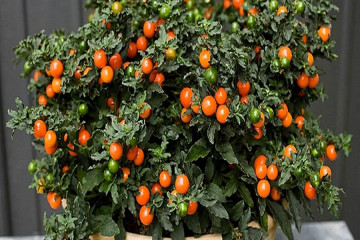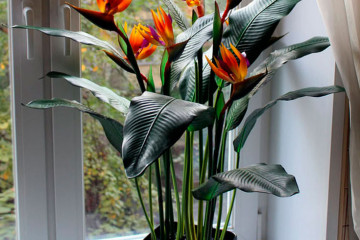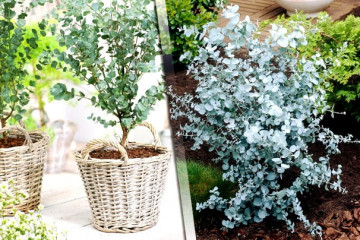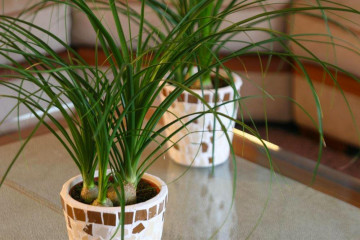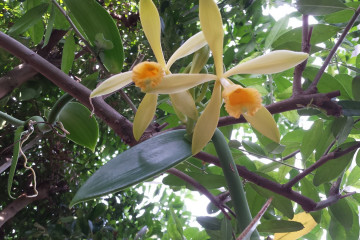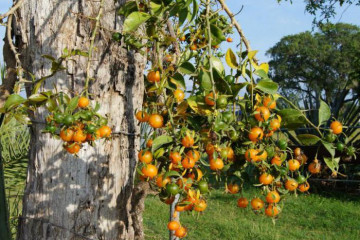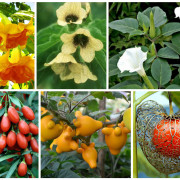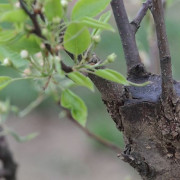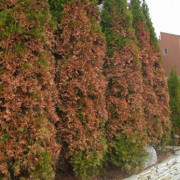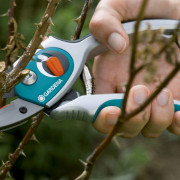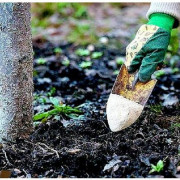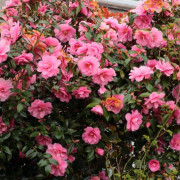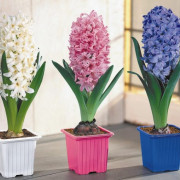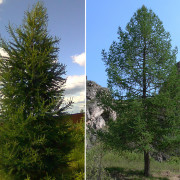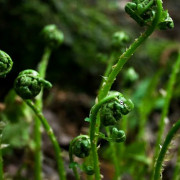Callistemon lemon: home care examples
Content:
Callistemon is an incredibly beautiful tropical shrub that blooms with red flowers of an interesting shape - in the form of a brush. Callistemon's homeland is Australia, belongs to the Myrtle family. In their native environment, some specimens reach 14-15 cm, in indoor conditions the size is more modest. Because of its unusual flowers, the plant is also called "Bengal candles" or "red stalks". The shoots of the plant branch off practically from the root system, over time, building up a crown that is heterogeneous in density.
Callistemon is famous for its healing properties, as the leaves of the bush secrete essential oils, thereby disinfecting the room and destroying microbes. People, in whose apartments this amazing plant grows, are less likely to get colds.
Description of the main types of callistemon
The callistemon flower includes over 35 varieties. Only not all of them are suitable for room content. It is recommended to consider the following species as a home plant:
- Callistemon lemon. When rubbing a leaf, the plant exudes a lemon scent, therefore this type of "red-grass" got such a name. It is a voluminous branched shrub that reaches almost 2-2.5 meters in height. The leaves of the bush are dark green with a slight bluish tinge and are lanceolate. The flowering of callistemon citrinus callistemon lemon in the classic version occurs in June with red-crimson inflorescences. It has many varieties of different shades, the most popular of which are easy to find in flower shops:
- Reeves pink - blooms with bright pink flowers;
- Burgundy - deep wine-colored inflorescences;
- Demens Rowena is a medium-sized bush that blooms with red-scarlet "Bengal lights", by the end of flowering they become pale pink;
- Mauve mist - the bush is decorated with unusual purple flowers;
- Burgundy - deep wine color;
- Little John is a compact shrub, very convenient for indoor growing;
- White Anzac - blooms with dazzling white flowers, with proper care this variety can reach 1.5 meters in height at home.
- Callistemon is rod-shaped or woven. This is a branchy, vigorous tree, reaching 7 m in the wild. Callistemon rodovidny has narrow, gray-green leaves and red-purple inflorescences. A feature of the woven callistemon is that the stamens at the base of the flower grow together into a ring. Most often, the "Captain Cook" variety is grown in apartment conditions.
- Callistemon red. A very tall shrub that looks like a tree, reaching 4 m in height. Red callistemon leaves are thin, elongated (up to 7 cm), bright red stamens with golden anthers.
Home care
Experienced flower growers believe that callistemon home care requires medium difficulty, since a flowering plant, due to its tropical origin, loves warmth and light very much. In Russia, it is grown exclusively in houses, apartments, greenhouses or a heated winter garden.
In the southern regions, it is possible to grow callistemon in the open field in the summer, but with the onset of cold weather it is necessary to move it indoors.
Callistemon needs the following care:
- Lighting. All types and varieties of exotic culture are very fond of light and perfectly tolerate direct sunlight. An ornamental bush can be placed near a window on the south side; the plant will not suffer a drop from bright sunlight. In case of insufficient lighting, the "red-grass plant" may not bloom at all. In the cold season, the problem of poor lighting can be solved by installing additional artificial light;
- Watering. Callistemon must be watered only with water at room temperature, it must first be defended in order to filter it from chlorine. Watering is required regularly in medium volumes, since excess or lack of water negatively affects the beauty and health of the flower. The need for watering can be determined by the condition of the soil in the pot; it should not be very wet or dry. It is important to regularly care for the leaves of the bush: remove dust with a device for a flower shower.
- Top dressing. For rapid growth and good flowering, callistemon should be fed 2 times a month with complex mineral fertilizers. It is best to purchase special formulations for flowering house plants.
- Pruning. After the flowers wither, all peduncles must be cut off immediately. In addition, it is required to remove crooked shoots that grow incorrectly inside the crown annually. In the future, these shoots, if not removed, will inhibit the growth of the shrub and spoil its appearance. Pruning is carried out on plants that have reached a height of 50 cm;
- Temperature. The correct temperature regime is the key to flowering shrubs. On cold days in spring, it is necessary to create warmer conditions for keeping the tropical plant indoors. In autumn, the temperature should be gradually reduced. Callistemon should overwinter in a slightly cool, but bright room.
Planting and transplanting a plant
For planting an exotic handsome man, a soil mixture, which is purchased for flowering perennials, is quite suitable.
Basic soil requirements for callistemon:
- Water permeability;
- PH neutral;
- Looseness;
- Be sure to need a drainage layer at the bottom of the pot.
The plant must be replanted for the first 3 years of its life in the spring. Adult shrubs are transplanted once every 3 years or when the roots fill the pot a little earlier, but it is advisable to renew the top layer of soil in the pot every year. It is best to plant in April, as a last resort, no later than the first days of May.
Reproduction methods
Callistemon propagates in two ways: by seeds and cuttings.
Seeds
Callistemon is sown from seeds as follows:
- The collected seeds are laid out on the surface of a wet substrate;
- Then the landings are slightly compacted;
- Moisturize;
- The container with the seeds is covered with a film, small holes are made in it for a little airing, so that the planting does not trample;
- The soil is moistened by spraying as needed.
Seedlings will appear within a month. As soon as this happened, you need to immediately remove the film. Seedlings after the appearance of the first two leaves dive into individual pots.Plants grow very slowly and bloom only for 5 years. Caring for seedlings consists in observing the temperature regime (20-22C0) and systematic moistening.
By cuttings
Callistemon will be able to preserve the characteristics of the parent plant by reproduction in this way. It is necessary to cut off the cuttings from the top, while capturing 3 or 4 internodes. Rooting of the cuttings must be done in a soil mixture in greenhouse conditions with a high level of humidity.
Callistemon practically does not get sick, but it can be tasty prey for insect pests. The most dangerous enemies for the plant are spider mites and scale insects. The lesion can be recognized by the appearance of a cobweb and wilting of the leaves. It is necessary to rinse all the leaves and shoots under a warm shower, then wipe with a damp cotton swab. Then spray with special insecticides.
Experienced flower growers believe that the presence of callistemon in an apartment gives confidence to the owner and increases self-esteem. In addition, the plant has beneficial properties and a beautiful appearance. The owners will not regret at all if they put such a wonderful flower in their house.
Video




